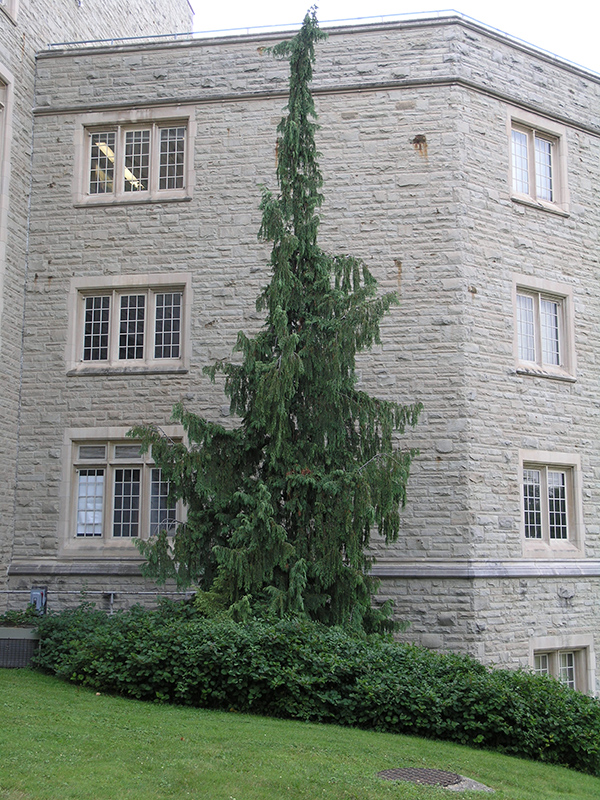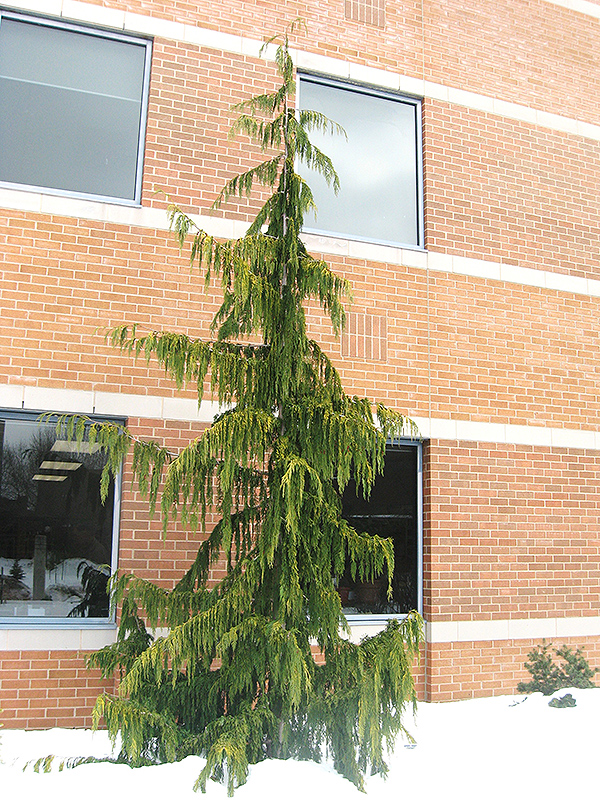
Woody > Callitropsis > Callitropsis nootkatensis > Callitropsis nootkatensis
Callitropsis nootkatensis
Yellow Cedar, Alaska Cypress, Nootka Cypress
Origin: Alaska to northern California. Native to Canada and USA.
| Family |
| Cupressaceae |
| Genus |
| Callitropsis |
| Species |
| nootkatensis |
| Category |
| Woody |
| Type |
| Tree (evergreen) |
| Synonyms |
| Cupressus nootkatensis, Xanthocyparis nootkatensis,Callitropsis nootkatensis |
| Pronunciation |
| USDA Hardiness Zone |
| 5 - 9 |
| Canadian Hardiness Zone |
| 4a - 8a |
| RHS Hardiness Zone |
| H3 - H7 |
| Temperature (°C) |
| 2 - 28 |
| Temperature (°F) |
| 36 - 83 |
| Height |
| 25 m |
| Spread |
| 6 m |
Photographs
Description and Growing Information
Flowering Period
| Landscape |
| The drooping branchlets give the tree a graceful weeping appearance. It makes an attractive specimen tree in parks and open spaces. It can also be used as a tall hedge. |
| Cultivation |
| Full sun to partial-shade. Can grow in dry conditions but prefers moist. Acidic soils. |
| Shape |
| Tall upright with a narrow form. |
| Growth |
| Medium |
| Habitat |
| Coastal rainforest and rocky ridge tops. West coast of North America; Alaska to California. |
| Bark/Stem Description |
| Thin. Mature bark has tight narrow grooves. |
| Flower/Leaf Bud Description |
| Short shoots that look like buds. The bud-like structure is the immature cones on tips of shoots. |
| Leaf Description |
| Grows in alternating pairs of 4 rows along the twigs, 3 mm long with an unpleasant odour. Sharp points at the ends and flattens as it ages. |
| Flower Description |
| Pollen cones that are 2 - 3 mm long and ovoid to globular in shape. |
| Fruit Description |
| Small and berry-like. They are about 4 mm long and 8 - 12 mm wide, fairly soft with small bumps. The scales of the cones are 4 - 6 mm, fairly thick and each scale has a pointed triangular bract about 1.5 - 2 mm long. |
| Colour Description |
| The bark is a greyish-brown colour. The underside of the bark has a bright yellow colour. Foliage is a dull bluish-green. Cones are greenish-yellow. The seeds when young are green and as they mature they are whitish-green with a purple tinge. The fruit is green in colour. |
| Texture Description |
| When young the texture is scaly. |
| Propagation |
| Propagated by seed or branch tip cutting treated with IBA. Branch tip cutting is the preferred method for fast results. For seed propagation, seeds must be sown between March to April. To germinate, the seeds must go through a 30 day period of warm stratification followed by a 30-day cold stratification at a temperature of 4°C. Seeds can be stored for 3 - 5 years in dry conditions. |
| Ethnobotanical Uses (Disclaimer) |
| Was used in multiple ways by the native population of Alaska and British Columbia. The natives used the bark for weaving carpets, robes and capes. The heartwood was used for making tools, bows, water paddles, dishes, boatbuilding and native masks. |


.jpg)